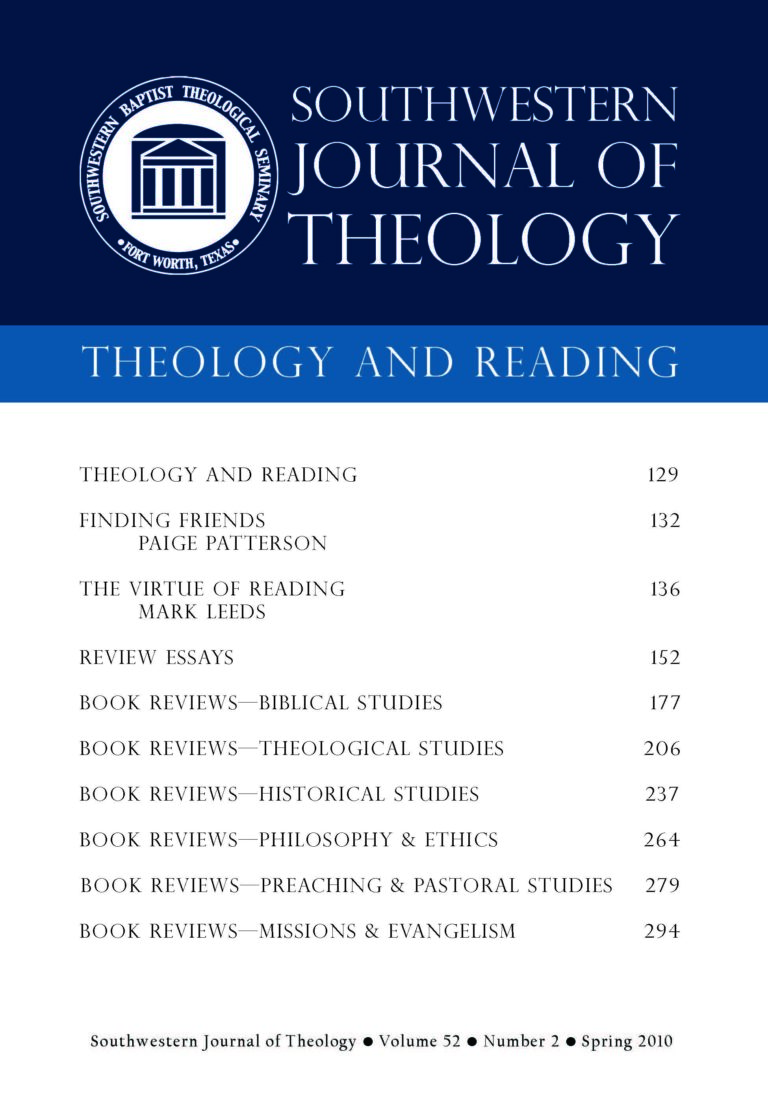
Theology and Reading
Southwestern Journal of Theology
Volume 52, No. 2 – Spring 2010
Managing Editor: Malcolm B. Yarnell III
By James K. Hoffmeier. Oxford: Lion Hudson, 2008. 192 pages. Hardcover, $29.95.
James K. Hoffmeier has moved beyond his scholarly books to write a popular book on archaeology and the Bible. While his scholarly writing has always been accessible, this book is for an audience that has only a basic knowledge of the Bible and archaeology. It is clear that decades of teaching in the classroom have prepared him to present the results of current archaeological research to undergraduate students. This intimacy with the data and ability to articulate a depth of knowledge into a synthetic discussion is now utilized in a pedestrian genre—the “coffee table” book.
As with most books at a popular, introductory level, it is well illustrated with pictures, charts, and artwork. The book is divided into three parts: Part 1, “Introduction to Archaeology and its Application to the Old Testament;” Part 2, “The Land and the Kings of Israel;” and Part 3, “New Testament Times.” Each part has four to five chapters. The discussion is very brief; each chapter is only ten to fifteen pages on average, including the illustrations and sidebars. The brevity prevents this book from being used in the classroom.
It is common for this genre of books to be outdated—especially since publishers usually retain text of an older book and update the illustrations, fonts, and pictures to give the impression of a new product on the market. This is not the case with this book. In spite of the brevity, Hoffmeier does not give a superficial presentation of the data. He discusses current finds and contemporary issues and debates. Hoffmeier introduces critical views on the historicity of the United Monarchy and recent controversies such as the Tomb of Jesus and the Joash inscription.
The format is typical for books that discuss archaeology and the Bible. The framework is the biblical text highlighted by archaeological finds that illustrate certain points. There is no critical discussion of how archaeology has informed our understanding of particular biblical texts or provides for a wider picture of the ancient world than what we have in the Bible. One possible exception is the chapter on the New Testament—but even then this chapter is missing major archaeological discoveries of the Maccabean period and Herod the Great’s building projects. Plus, the section on the Gospels does not explicitly address the tension between Jewish villages and Greek poliae (cities). Another example of how archaeology has informed our understanding of the Biblical text is the transition between the Late Bronze Age and Iron Age I. This archaeological period sheds light on the history and biblical accounts found in the books of Joshua and Judges. These examples are not weaknesses of the book, considering that this reviewer cannot determine how these issues could be discussed in an introductory book.
With the above issues aside, Hoffmeier does an excellent job presenting an introductory overview of archaeology and the Bible. The text is peppered with personal accounts of his travels in Bible lands and anecdotes from his excavations. One of the strengths of the book is the introductory section where Hoffmeier discusses theoretical issues on archaeology and biblical studies. This is one of the best introductions the reviewer has read on the nature of archaeology, apologetics, and abuses of the archaeological data in the interpretation of the Bible. The first two chapters, “The Birth of Biblical Archaeology” and “The Bible, Archaeology, and Interpretation,” are a valuable read for all students in introductory Bible courses.
The book is not appropriate for the classroom due to its brevity and lack of footnotes or references (there is a short bibliography at the end). Nevertheless, it will be a valuable book in a pastor’s library. Dr. Hoffmeier writes with authority, offering an excellent introduction to archaeology and the Bible.





